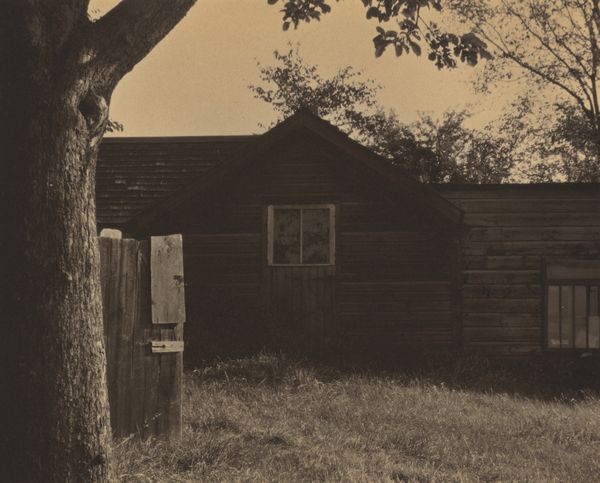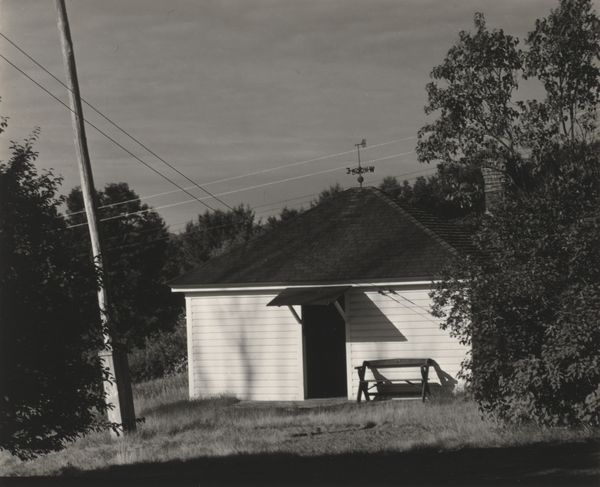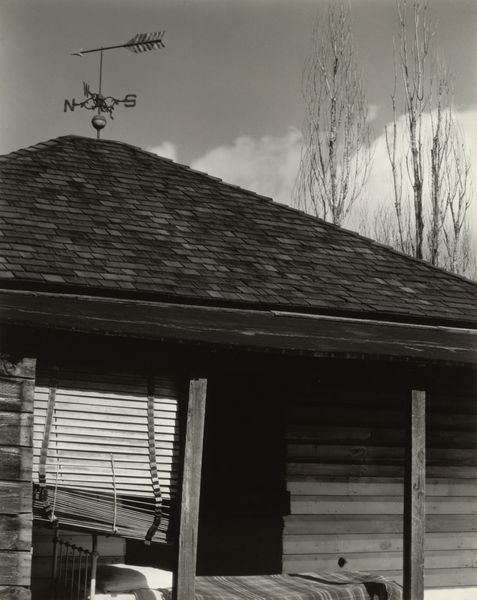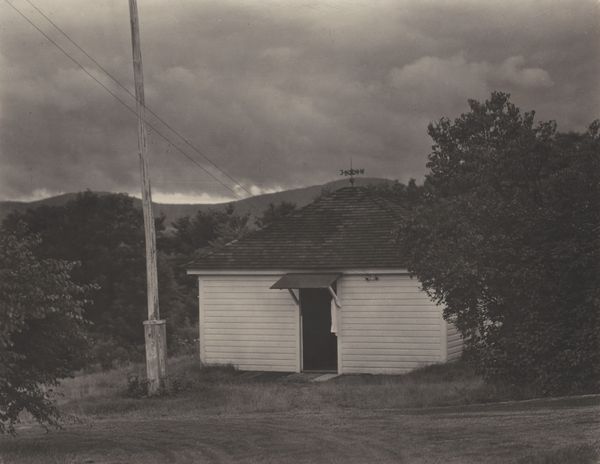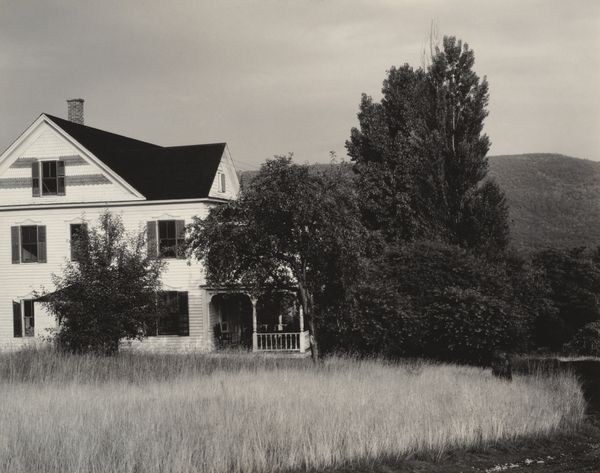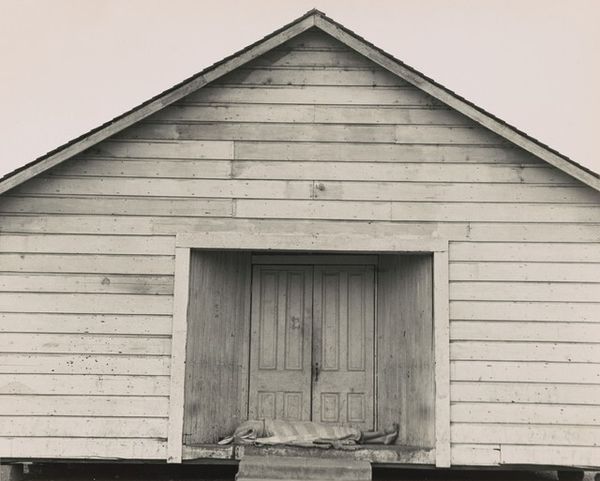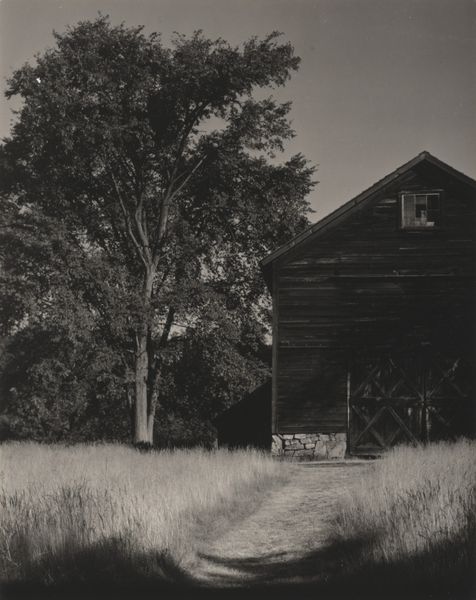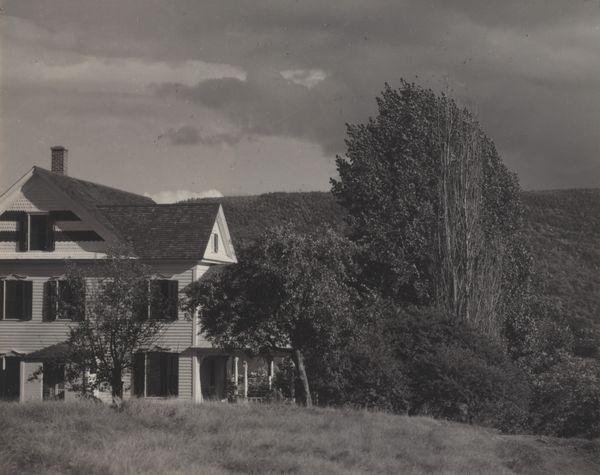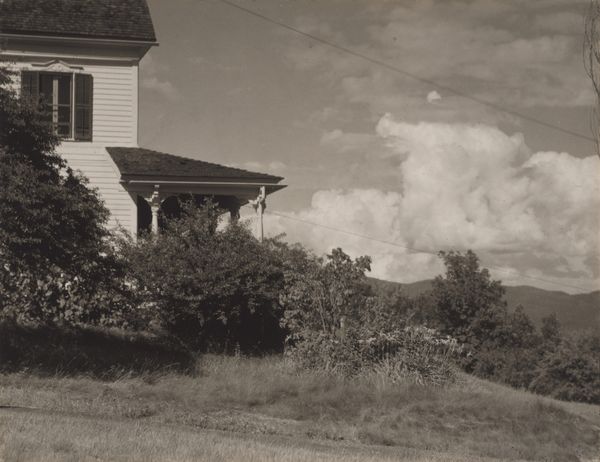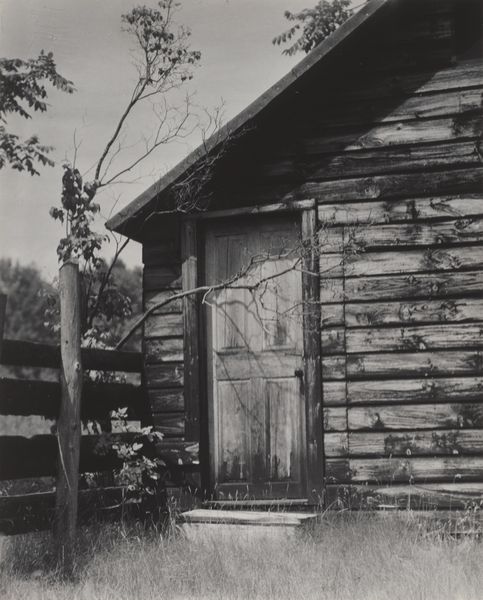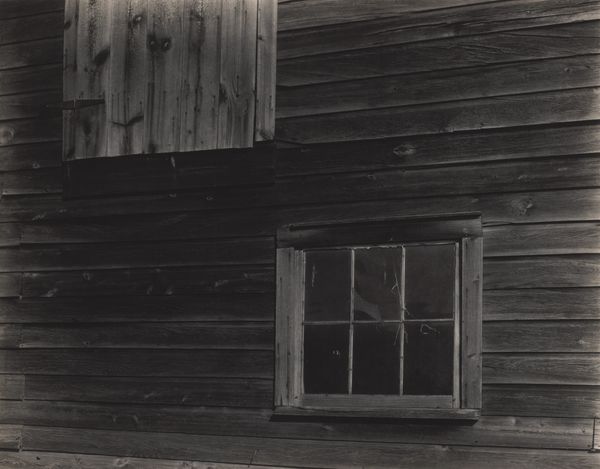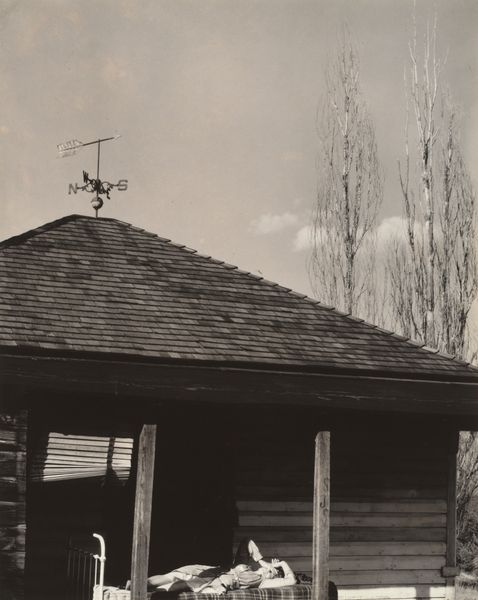
Dimensions: sheet (trimmed to image): 8.9 × 11.4 cm (3 1/2 × 4 1/2 in.) mount: 31.5 × 24.9 cm (12 3/8 × 9 13/16 in.)
Copyright: National Gallery of Art: CC0 1.0
Curator: Well, here we have Alfred Stieglitz’s gelatin-silver print, "Back of Little House," from around 1930. It's a rather striking image. What are your first impressions? Editor: Hmm, a lonely, contemplative vibe washes over me. Like a stage set for a dream I can't quite recall. And is that… a bed on the porch? So exposed! Curator: Indeed! It's interesting how Stieglitz, often associated with urban scenes, turns his lens toward rural subjects here. The photograph could be viewed as part of a broader shift towards American modernism. We have a rejection of European influence and more exploration of unique places in America. Editor: Right, like the man who helped transform photography into fine art suddenly getting cozy with...well, backwoods scenery? But, you know, there’s a textural symphony playing out in the details – the rough-hewn planks of the little house, the smooth shingles on its roof... It's tactile. Curator: Precisely. Consider the historical context. Stieglitz championed photography as a fine art. This photograph's focus on texture, form, and light elevates it beyond mere documentation. We see this house through his distinct, almost painterly lens. Editor: Okay, so less about documentary, more about *feeling*. But that wind vane on the roof--isn’t it a bit absurd? It suggests someone really cares which way the wind blows out here. And a touch ironic to obsess about where to find your direction when all that exists is what you see. Curator: The wind vane contributes to the work’s quiet, understated symbolism. Stieglitz uses it to ground his audience in that very moment that that wind may or may not blow, creating layers of symbolism. Editor: Right, or maybe Stieglitz saw beauty even in the mundane--an abandoned shed turned into an open-air bedroom. Curator: It's this attention to everyday American scenery through fine art that gave Stieglitz the reputation that continues to proceed him even to this day. Editor: And maybe that is the essence of his work here -- the humble "Back of Little House" is not just a record; it's an invitation to slow down, look closer, and discover the quiet poetry of forgotten corners. Thanks for showing me that! Curator: An absolute pleasure, and, for me, a good reminder of why cultural commentary can only ever serve to better enrich and enlighten what an artist has done!
Comments
No comments
Be the first to comment and join the conversation on the ultimate creative platform.
